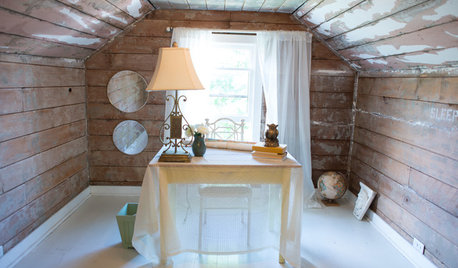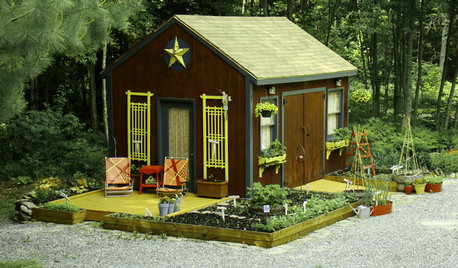To dig or not to dig
maro_gardener
17 years ago
Featured Answer
Sort by:Oldest
Comments (71)
blutranes
17 years agolast modified: 9 years agofertilizersalesman
17 years agolast modified: 9 years agoRelated Professionals
San Juan Landscape Architects & Landscape Designers · Bridgeport Landscape Contractors · La Mirada Landscape Contractors · Nashua Landscape Contractors · Newnan Landscape Contractors · Rockland Landscape Contractors · Franconia Decks, Patios & Outdoor Enclosures · Fredericksburg Decks, Patios & Outdoor Enclosures · Fullerton Decks, Patios & Outdoor Enclosures · Lansdale Decks, Patios & Outdoor Enclosures · Larkspur Decks, Patios & Outdoor Enclosures · Miami Decks, Patios & Outdoor Enclosures · Puyallup Decks, Patios & Outdoor Enclosures · Richmond Decks, Patios & Outdoor Enclosures · South Lyon Decks, Patios & Outdoor Enclosurespablo_nh
17 years agolast modified: 9 years agoblutranes
17 years agolast modified: 9 years agomaggiemae_2006
17 years agolast modified: 9 years agopablo_nh
17 years agolast modified: 9 years agoblutranes
17 years agolast modified: 9 years agoblutranes
17 years agolast modified: 9 years agofertilizersalesman
17 years agolast modified: 9 years agopablo_nh
17 years agolast modified: 9 years agofertilizersalesman
17 years agolast modified: 9 years agopablo_nh
17 years agolast modified: 9 years agofertilizersalesman
17 years agolast modified: 9 years agomaggiemae_2006
17 years agolast modified: 9 years agofertilizersalesman
17 years agolast modified: 9 years agotetrazzini
17 years agolast modified: 9 years agopablo_nh
17 years agolast modified: 9 years agokqcrna
17 years agolast modified: 9 years agohoorayfororganic
17 years agolast modified: 9 years agopablo_nh
17 years agolast modified: 9 years agobryanccfshr
17 years agolast modified: 9 years agohoorayfororganic
17 years agolast modified: 9 years agopablo_nh
17 years agolast modified: 9 years agoswanz
17 years agolast modified: 9 years agomaggiemae_2006
17 years agolast modified: 9 years agoswanz
17 years agolast modified: 9 years agomaggiemae_2006
17 years agolast modified: 9 years agoswanz
17 years agolast modified: 9 years agoremuda1
17 years agolast modified: 9 years agomistervetch
17 years agolast modified: 9 years agogonefishin
17 years agolast modified: 9 years agoalphonse
17 years agolast modified: 9 years agomaggiemae_2006
17 years agolast modified: 9 years agobarton
17 years agolast modified: 9 years agoswanz
17 years agolast modified: 9 years agoalphonse
17 years agolast modified: 9 years agomaggiemae_2006
17 years agolast modified: 9 years agobarton
17 years agolast modified: 9 years agomaggiemae_2006
17 years agolast modified: 9 years agotetrazzini
17 years agolast modified: 9 years agoeswar
17 years agolast modified: 9 years agodchall_san_antonio
17 years agolast modified: 9 years agomaggiemae_2006
17 years agolast modified: 9 years agoswanz
17 years agolast modified: 9 years agogreenj1
17 years agolast modified: 9 years agomaggiemae_2006
17 years agolast modified: 9 years agogreenj1
17 years agolast modified: 9 years agobpgreen
17 years agolast modified: 9 years agomaggiemae_2006
17 years agolast modified: 9 years agogreenj1
17 years agolast modified: 9 years ago
Related Stories

GARDENING GUIDESGarden Myths to Debunk as You Dig This Fall and Rest Over Winter
Termites hate wood mulch, don’t amend soil for trees, avoid gravel in planters — and more nuggets of garden wisdom
Full Story
DECORATING GUIDESSimple Pleasures: Digging in the Attic
Sift through forgotten things to bring back memories and inspire stories — and maybe even yield a treasure or two
Full Story
REMODELING GUIDESHow to Dig Down for Extra Living Space
No room for a ground-level addition? See if a finished basement is a good idea for you
Full Story
WORLD OF DESIGNDigging for Gold in Old Danish Designs
Firms not only are reissuing works by popular midcentury designers, they’re also producing pieces from once-rejected sketches
Full Story
BASEMENTSRoom of the Day: Family Digs In for a Chic New Kitchen and Dining Area
When a homeowner needs to free up kitchen space for her home bakery business, the only way to go is down
Full Story
DECORATING GUIDESThe '70s Are Back. Can Ya Dig It?
No need to cringe. These 21 groovy blasts from the past are updated to look fabulous today
Full Story
GARDENING AND LANDSCAPINGDig This Garden Shed Makeover for Less Than $300
New paint, accessories and raised vegetable beds turn a drab outpost into a colorful charmer
Full Story
HOUSEPLANTSDig These Decorative Planters
Houseplants deserve a well-designed home too, and these modern planters let them put roots down in style
Full Story0

HOME OFFICESRoom of the Day: Digging Emerald in a Chic Atlanta Office
Green accents tickle a mom and her toddler pink in this office and playspace insired by high fashion
Full Story
ECLECTIC HOMESHouzz Tour: A New Look for Former Student Digs
An ill-treated Victorian in England becomes a more open, extended and aesthetically appealing family home
Full StoryMore Discussions







alphonse